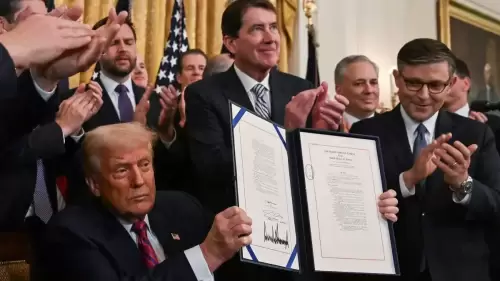 |
|
 |
|
 |
|
 |
|
 |
|
 |
|
 |
|
 |
|
 |
|
 |
|
 |
|
 |
|
 |
|
 |
|
 |
|
Cryptocurrency News Articles
DeFi's 2022 Collapse: What Happened and What's Next for Crypto?
Jul 16, 2025 at 11:16 pm
A look back at the DeFi collapse of 2022, its causes, and how the industry is evolving towards real-world asset integration and regulatory clarity.
DeFi's 2022 Collapse: What Happened and What's Next for Crypto?
The DeFi landscape faced a harsh reckoning in 2022. Over $2 trillion vanished as Terra's implosion triggered failures across the crypto ecosystem. It exposed vulnerabilities and dependence on unsustainable algorithms.
The Great DeFi Unwind of '22
Mid-2022 was brutal. The collapse of Terra and subsequent failures of Celsius, Voyager, and Three Arrows Capital revealed the shaky foundations of DeFi. The industry relied too much on self-referential assets and circular yield – promising stability without substance.
It wasn't just a liquidity issue; it was a structural problem. The next generation of financial infrastructure can't be built on hype. DeFi needed a stronger foundation to deliver on its promises of open access and financial inclusion.
The Case for Real-World Value (RWA)
Excluding Bitcoin, the entire crypto market is worth less than Apple or Microsoft. Despite cultural and technical leaps, crypto barely registers on global capital markets. Real-world assets like equities, bonds, and real estate are worth over $600 trillion. That's the capital DeFi needs to tap into to evolve.
Unlocking RWA turns traditionally illiquid assets into liquid, tradable value in DeFi, opening new lending markets and increasing TVL potential. Platforms like Robinhood and Kraken are bridging retail investors with tokenized equity exposure.
Tokenized Stocks and Institutional Interest
Solana and other ecosystems are experimenting with tokenized stocks. Even traditional institutions are cautiously entering the space. Circle's IPO was a watershed moment, and stablecoins are now used in traditional finance. Chainlink's Proof of Reserve (PoR) brings transparency to tokenized assets. But even with this momentum, we've barely scratched the surface.
Regulation is Evolving
Historically, security Token Offerings (STOs) carry inherent securities regulatory restrictions. However, frameworks are catching up. Europe's MiCA provides clear classifications for crypto assets, including asset-referenced tokens (ARTs), which require full backing and transparent management. Dubai's VARA has proposed an ARVA token standard. The US Genius Act pushes stablecoin legislation forward.
Asset-Referenced Tokens: A New Dawn?
Tokenized equities on Solana and Robinhood have gained attention. Exchanges are racing to support real-world asset trading. This reflects a shift from synthetic exposure to substantiated value. Asset-referenced Tokens are emerging as a new class, fusing real-world collateral with crypto's composability. These tokens are trusted, composable, and grounded in economic reality.
Tokenization Platforms Emerge
Midas, a financial tokenization platform, introduced new tokenized investment products on Etherlink, an Ethereum-compatible layer-2 system built using the Tezos blockchain. Products like mMEV and mRe7YIELD offer opportunities in DeFi. Etherlink provides the ideal environment for scalable financial applications.
India's Concerns and Global Cooperation
India's legal alarm over crypto has hit new highs, with the Delhi High Court warning it threatens monetary stability. The court stated that cryptocurrency transactions could dissolve official monetary instruments into a system of untraceable funds, raising systemic economic concerns. Finance Minister Nirmala Sitharaman has emphasized the need for global cooperation on crypto rules.
Bitcoin Miners and Market Trends
On-chain data shows a drop in Bitcoin miner activity. The Bitcoin Miners’ Volume Share has declined to multi-year lows, suggesting they don't have much appetite for selling. Also, 75% of all reported mining activity now occurs in the US.
The Future is Bright (Maybe?)
The DeFi collapse of 2022 was a wake-up call. But it also paved the way for a more sustainable future, integrating real-world assets and working towards regulatory clarity. While the road ahead might be bumpy, the potential for a truly decentralized and accessible financial system is still very much alive. Keep your head up, buttercup – the crypto rollercoaster is far from over!
Disclaimer:info@kdj.com
The information provided is not trading advice. kdj.com does not assume any responsibility for any investments made based on the information provided in this article. Cryptocurrencies are highly volatile and it is highly recommended that you invest with caution after thorough research!
If you believe that the content used on this website infringes your copyright, please contact us immediately (info@kdj.com) and we will delete it promptly.






























































